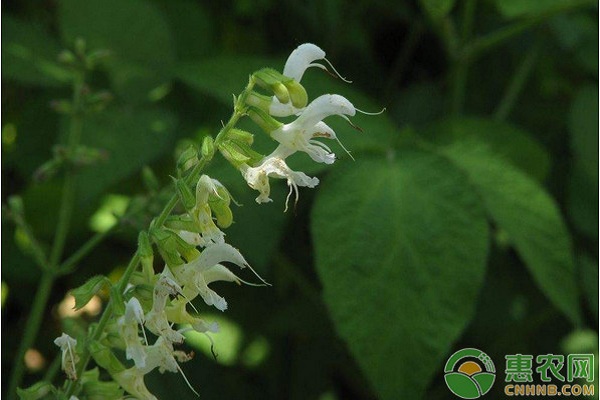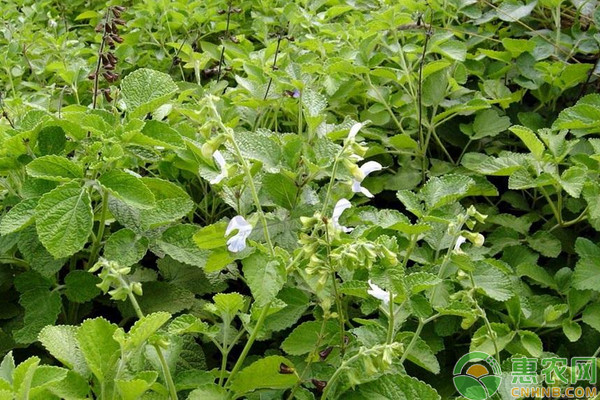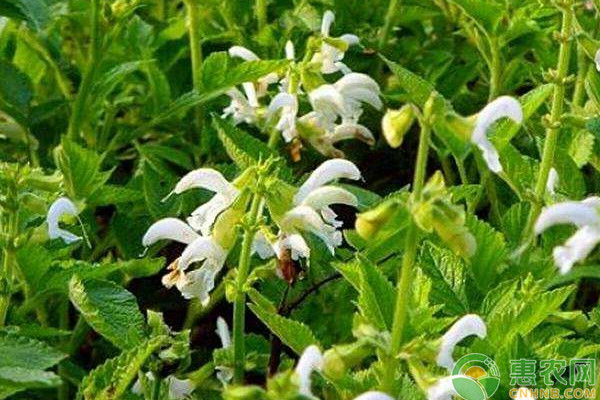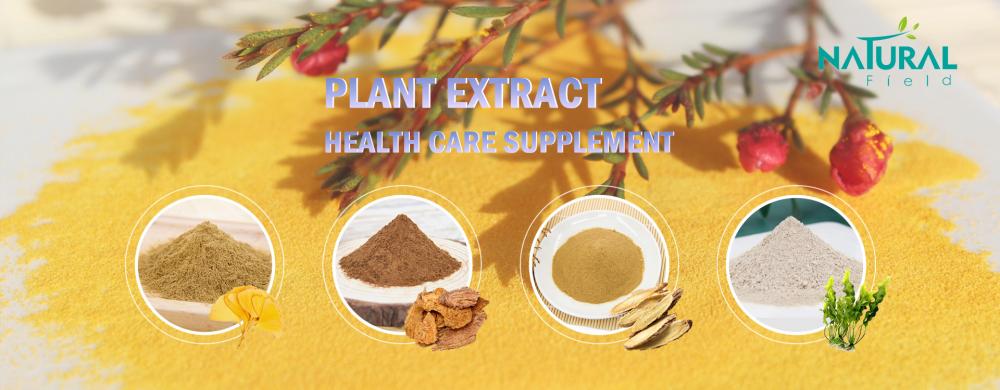How is the white flower Danshen planted? The white flower Danshen is currently distributed in Anhui, Shandong, Shaanxi and other regions of China. The effect is extremely high. It can regulate blood circulation, clear heart and relieve trouble, and relieve pain. Let's take a look at the key points of standardized planting techniques for white salvia in Shandong.

1 Site preparation
Baihua Danshen enjoys a warm and humid environment, and its adaptability and cold resistance are strong. In order to promote root growth and development, the soil should be selected with rich and fertile loose sandy soil rich in humus and well-drained. The mountain should use low hills of sunny sun. Land with sufficient illumination, sufficient precipitation, no pollution of water quality, geographical environment and natural conditions.
2 seedling transplanting
After the land is ploughed and flattened, it is made into a scorpion 100-150cm wide, applied to the base fertilizer, deep-turned, and watered again. When the ground is seven or eighty percent dry, turn it over once, the sputum is fine and flat, and the seeds are evenly scattered on the noodles. Gently step on the foot with the foot to make the seed and the soil tightly combined. It is not necessary to cover the soil. After planting it, a thin layer of wheat bran or rice bran is sprinkled on it. The ground is sprinkled with water and often has lyricism. After 2 months, You can transplant. When the seedling height is 6~10cm, it can be transplanted. Before transplanting, the seedbed is watered for 1 time, so that it is best to bring the soil to start the seedling. The planting distance is 30~35cm×20~25cm, and the planting is 4500-5000.

3 Fertilizer management
When the seedling height is 6~7cm, the seedlings can be fixed, and when the seedling height is 15~17cm, the cultivating and weeding should be carried out, and 15~20kg of the organic-inorganic compound fertilizer mainly based on phosphate fertilizer should be combined; the field can neither accumulate water nor drought. Pay attention to drainage during the rainy season, watering the drought; cut the inflorescence and the old rod, except for the inflorescence of the remaining seeds, other plants will start to remove the inflorescences from mid-April to keep the nutrients concentrated to the roots, which is beneficial to root growth. Strong and strong; after planting the plant, the stems and leaves gradually withered, which is unfavorable to the growth of the roots. The old stems are cut off, and the bases are re-growed to promote the roots to continue to grow.
4 pest control
4.1 root rot
It is easy to develop in hot and rainy seasons. The roots of the damaged plants are black and the ground is withered.
Control methods: continuous cropping in heavy areas; selection of dry land, well-drained plots; attention to drainage during the rainy season; watering with 70% carbendazim 1000 times solution during the onset.
4.2 Leaf spot disease
Mainly infringes on the leaves. The leaves of the diseased plants have nearly round or irregular dark brown lesions, and in severe cases, the leaves die. The disease is a bacterial disease. It started in May and continued until the end of autumn. The incidence was heavy from June to July.
Control measures: agricultural control: clean up the pastoral and deeply bury the sick and disabled plants. Pay attention to drainage. Improve ventilation and light transmission conditions. Implement a rotation. Chemical control: During the onset period, 50% carbendazim 800 times solution or 70% methyl thiophanate 1000 times solution was used to irrigate the roots, 250 mL per plant, and then refilled once every 7 to 10 days for 2 to 3 times. It can also be sprayed once every 10 days with 70% methyl thiophanate 500 times solution or 75% carbendazim 600 times solution, and sprayed 2 to 3 times to spray the base of the stem.
4.3蛴螬
Harmful to larvae, bite off seedlings or mouth roots, causing lack of seedlings or root cavities, serious damage.
Control method: fertilization should be fully decomposed, it is best to use high temperature compost; light traps adult; use 75% phoxim EC at 0.1% seed dressing; 90% trichlorfon 1000 times or 75% sulphur in field Phosphorus emulsifiable concentrate 700 times liquid washing.
4.4 Locust
In order to become a nymph, the stem and leaf juice are sucked, and in severe cases, the stems and leaves are yellow.
Control method: In the winter clearing garden, the leaves of the dead plants will be buried or burned; 50% of the killing pine or 40% of the fruit emulsifiable concentrate will be sprayed 1000-2000 times in the onset period, and sprayed once every 7 to 10 days. Several times in succession.
4.5 Silver Sp1
The larvae bite the leaves and occur in summer and autumn.
Control method: use 1500 times solution of green worm powder containing more than 10 billion spores per gram. In addition, 10% imidacloprid wettable powder 2500 times solution or 5% taibao emulsifiable concentrate 2000 times solution can be used, sprayed at a low age, sprayed once every 20 days, and prevented once or twice. In the young age, spray 90% of the original drug of 800% trichlorfon and spray it once every 7 days.

4.6 cotton bollworm
The larvae harm buds, flowers and fruits and affect seed yield.
Control method: 1 use 50% parathion emulsifiable concentrate, or 50% phoxim emulsifiable concentrate 100mL per 667m2; or 50% acephate emulsifiable concentrate 150mL; or 2.5% enemy killing emulsifiable concentrate or 20% chlorpyrifos EC 25mL; 2.5% kung fu cream 30 ~ 40mL, 50 ~ 60kg spray with water.
2 The use of organic phosphorus and pyrethroid insecticides mixed, the control effect is ideal.
5 harvesting processing
It can be harvested in spring and autumn. After the frost falls, the leaves will wither, the ground will stop growing, the roots will be dug out, the soil will be removed, the cage will be removed, and dried. The finished product must be dried and placed in a dry and ventilated place to prevent moisture and mildew and insects. When the stems and leaves are flourishing in summer, the leaves are harvested, dried or made into tea. Inflorescences are collected during flowering and dried.
The above is the whole content of the planting technique of white flower Danshen. If you also plan to purchase the seeds of Baihua Danshen for planting, you must first come to Huinong.com to learn the relevant planting techniques!

NATURAL is one of the most professional health care ingredient manufacturers and suppliers.
Our factory offers the best quality extract with competitive price.
Welcome to buy or wholesale bulk products for sale here.
Main fuction: Anti-Cancer , Antioxidant , Male & Female Health, Liver's protecting, Improving immunity,Anti-Inflammatory,
Sleep improvement/Anti-anxiety
Main Product:Resveratrol, Coenzyme Q10, ginkgo extract, Rhodiola extract, Epimedium,
Ashwagandha Powder, Garcinia cambogia Powder, Bacopa,Ginseng Powder, Maca
Health Care Supplement,Health Care Raw Material,Health Care Ingredients,Health Ingredients
Xi'an Natural Field Bio-Technique Co., Ltd. , https://www.naturalnf.com